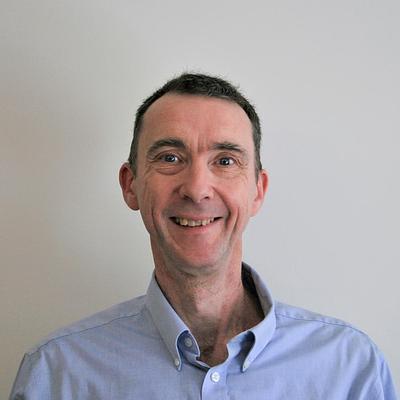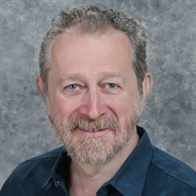The Imperative of Salt Body Imaging
Adapted from James Brewster's SEG 2017 paper by Bell Geo's guest blogger Simon Emsley

James Brewster, Bell Geospace - Senior Software Engineer

Simon Emsley, Independent Geophysicist - Guest Article Blogger
This article ''The Imperative of Salt Body Imaging'' is a piece adapted from James Brewsters 2017 SEG paper ''Source Body Migration Imaging of the SEAM Salt Body Model''
Introduction
The primary exploration method in Exploration and Production (E&P) for Oil and Gas (O&G) are seismic methods. The imaging of salt bodies using these methods is problematic due to the complex shapes of steeply dipping flanks, adjacent overburden strata and the usually strong acoustic impedance and velocity contrasts at the sediment-evaporite interface. Many of the world’s great hydrocarbon provinces lie in salt basins (e.g., Gulf of Mexico, Persian Gulf, North Sea, Lower Congo Basin, Campos Basin and Pricaspian Basin) so imaging the geometries is imperative. The presence of salt in a basin affects virtually all aspects of a hydrocarbon system. The ability to accurately image the salt structures have implications on reservoir definition, volumetrics and drilling amongst others.
The Ability to Image in 3D is Key
Acoustic impedance is a velocity-density product. The measurement of the gravity and particularly gravity gradiometry (FTG) provides spatial information on the distribution of the density of the subsurface. The ability to image this 3D distribution is key. Several classes of method exist for calculating the three-dimensional source distribution responsible for a measured potential field. These techniques require:
-
significant computing resources
-
sufficient mathematical knowledge to understand the regularization schemes, instabilities and issues arising from nonuniqueness.
Another class of techniques have been developed that are not intended to fully solve the inversion problem but can rapidly generate a qualitative image of the undersurface. Although these have advantages of being fast, each is limited in terms of general accuracy, resolution and applicability. There is a need for a method that can bridge the gap between rapid imaging techniques and rigorous inversion algorithms.
Rapid Imaging Methods
Potential field migration is a rapid imaging method that has been shown to produce an improved image of the density distribution if applied iteratively. Another iterative method is source body migration that uses potential field migration to generate a density distribution. It differs in that the subsurface is assumed to consist of a collection of source bodies of uniform density.
Application
The process was demonstrated by applying it to a simulated gravity gradient survey data set generated using the density contrast and shape of salt in the SEAM [SEG Advanced Modeling] model but not the complexity of the surrounding sediments.
The source body migration method can be made to obey the density and top of salt constraints by limiting the allowed density values. To impose the geometric compactness constraint a method was needed to redistribute the source density. Without changing the “measured” field. It is well known that potential field data inversion does not yield a unique solution as multiple realizations of density, depth and size can be generated. Consequently the mass can be moved as a function of depth. Specifically, upward continuation can be applied to move the mass upwards. The successive application of the upward continuation operator can convert a fragmented density distribution into one consistent with a compact salt body.
Salt Model Inversion
The task of inverting for the shape of the salt body is defined by three assumptions:
-
The location of the top of salt is known
-
The density contrast of salt as a function of depth is known and
-
There are no concavities or vertical gaps in the salt distribution.
Although this study was simulated, the problem of salt inversion is framed by real interpretation workflows.
The process used to invert for the salt density has two components.
-
source body migration, which is used to generate the initial mass distribution
-
which is then redistributed using upward continuation conforming to the imposed constraints.
Starting with the density voxet product a simplified version of the model was generated by isolating the salt body from the surrounding sediments. A voxel was identified as containing salt if its density was 2.16 +/- 0.1 gm/cm3. At each depth, a density contrast was assigned to the salt by subtracting a value equal to the average density of the matrix material at that depth. The voxel array was resampled to a cell size of 200 m before forward modelling to generate the gradient field. The resulting voxel array was 35 km by 40 km in x- and y- and ranges in depth from 0 to 15 km. The simulated full tensor gradient (FTG) survey measurements were taken on a square grid of locations with a spacing of 200 m. The altitude was chosen such that z = 0.
Migration Density Field
The migration density field was calculated using all of the measured gravity gradient components and each maxima and minima was used as the seed point for a candidate source body. The size and shape of the source were determined using the contour surfaces of the three dimensional field that enclosed each seed point. A contour value is chosen and the resulting volume assumed to be filled with mass of uniform density. The gradient field is then evaluated at the observation locations. The optimum density of this body is found by a least squares fit between the observed gradient field and this forward model. All measured gradient tensor components are used to make this fit. This process is repeated until a contour value is found that minimizes the sum of squares of the residual field that remains. The best fit field is then subtracted from the observations and the migration density field recalculated and the calculation repeated. Iterations continue until the residual gradient field is at a level consistent with the noise level in the input data. The cumulative density distribution due to the source bodies is the final output.
Results
The results of the imaging process show that the migration result is too concentrated, generating smaller areas of thicker salt rather than broad areas of thinner salt. The images produced are accurate in many places but fall short in others. These discrepancies were due to poor imaging of the flat, relatively shallow, portion of the salt body where the salt body adjoins the edge of the simulated survey area; an edge effect. The difficulty in imaging it may be due to intrinsic properties of the potential field migration. The existence of a zero density contrast zone and the fact that gravity fields from positive and negative density contrast regions cancel out are major challenges in interpreting salt using gravity. This initial study bypassed these issues by only considering salt with a negative density contrast.
Further Research
At the time of the paper the algorithm is not capable of handling a change in the sign of the density contrast. If there is a cavity in the positive density contrast portion of the salt it would have to be removed by moving the bottom of the salt limit lower not higher. This would cause the creation of cavities in the negative density contrast portion of the salt.
Another option for future research is to test different imaging methods to find the location and shape of the sources.
Conclusion
The application of this two step process using source body migration and upward continuation can be applied iteratively to generate a set of source bodies from gravity gradient measurements. The density contrast can be redistributed without changing the resulting observed field values by upward continuation. The algorithm that has been developed exploits the nonuniqueness of potential field data to transform the density distribution into one that obeys the given constraints. This has been demonstrated by applying the method to imaging a salt body model using a set of simulated gravity gradient survey measurements. Testing different imaging methods to find the location and shape of sources and the modification of the algorithm so that it can handle a change in the sign of the density contrast are subject to ongoing research.
The results represent the first attempt to apply source body migration to a task as complex as the seam salt body. The images produced were accurate in many places but fall short in others. The results of the application of the algorithm are encouraging. The results were not intended to be compared to those achieved using large scale regularized optimization methods. Rather the goal was to improve on what can be done using other methods of rapid imaging or depth estimation.
You are welcome to leave comments on this post below or find the full paper for download from the Bell Geospace resource library.
Receive Bell Geospace Articles To Your Inbox
Would you like to receive the next installment directly to your email?
